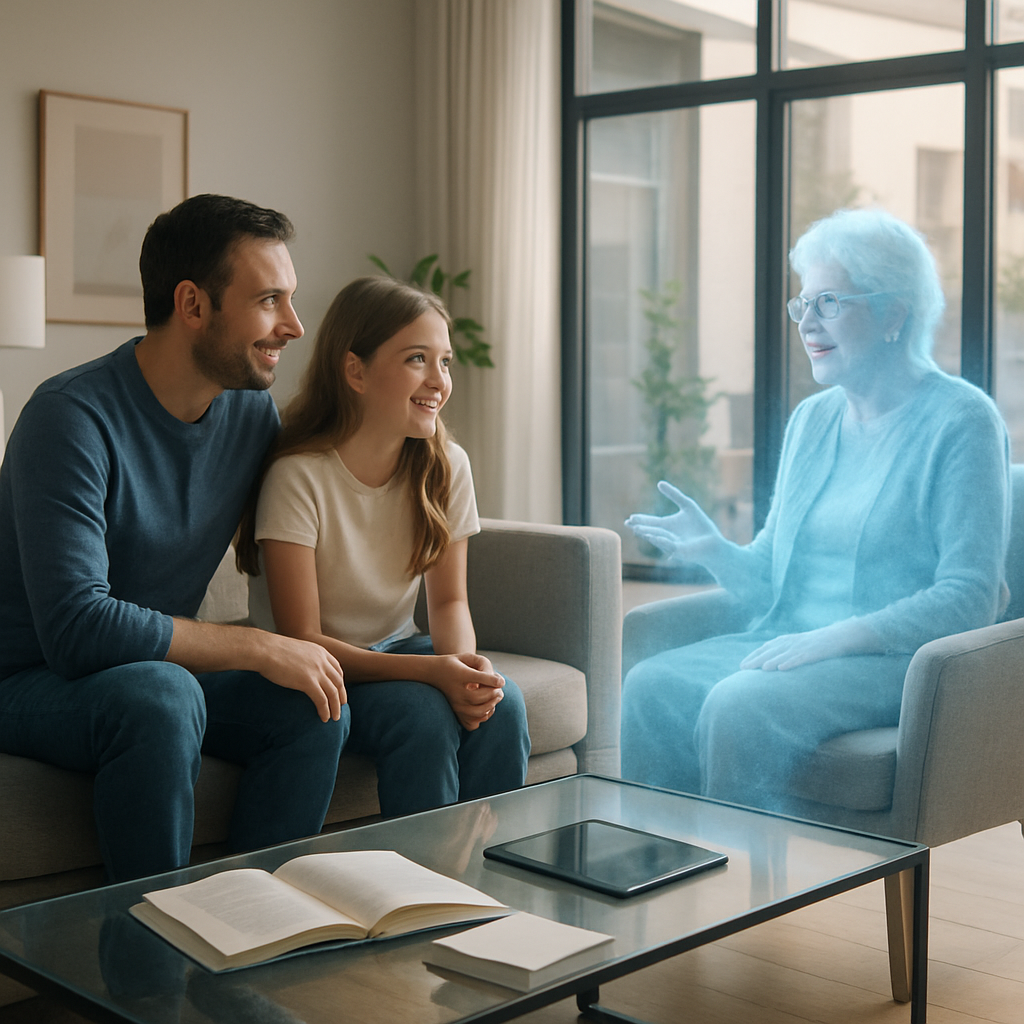Unveiling the Future of Holographic Telepresence in Everyday Life

The idea of holographic telepresence has always seemed like something straight out of science fiction. It’s the stuff of Star Wars and Star Trek, right? But turns out, it’s not as far off as we might have thought. The concept of projecting a three-dimensional image of someone into a room, allowing them to interact with the environment as if they were actually there, is slowly becoming a reality, and its implications for everyday life are both fascinating and a bit mind-boggling.
What Exactly is Holographic Telepresence?
Let’s start with a quick rundown. Holographic telepresence is about creating a hologram of a person that can be transmitted to another location in real-time. Imagine sitting in your living room and having a full-fledged conversation with your best friend who lives halfway across the world. You see them, you hear them, and the coolest part? It feels like they’re right there with you. No screens, no awkward delays just a seamless, immersive experience.
The technology behind this involves a mix of cameras, sensors, and a whole lot of processing power. Companies like Microsoft with their HoloLens and startups like Looking Glass Factory are pushing the boundaries of what’s possible. And while the tech is still in its infancy, it’s already making waves in industries like healthcare, education, and entertainment.
The Practical Side of Things
Now, you might be thinking, “Sure, this sounds neat, but where would I actually use this?” Fair question. Let’s break it down.
Healthcare
Imagine a world where specialists can consult on surgeries from miles away or where physical therapy sessions can happen in your living room without a physical therapist having to be there. Dr. Sarah Andersen, a renowned orthopedic surgeon at Johns Hopkins, mentioned in a recent interview that holographic telepresence could revolutionize how medical consultations happen, especially in rural areas lacking access to specialized care.
There’s also the potential for training. Medical students could learn procedures by observing a holographic representation of their mentor performing a surgery, getting a much more visceral sense of the process than any textbook could provide.
Education
Schools have been trying to innovate with remote learning for ages, and holographic telepresence might be the missing piece. Imagine attending a lecture where the professor appears as a hologram in your living room, able to interact with students in real-time. Not just a one-way street but a full-on interactive session.
A study by the University of Southern California found that students retained information more effectively when engaged in immersive learning environments compared to traditional methods. With holographic telepresence, a history class could virtually transport students to ancient Rome or let them stand beside Martin Luther King Jr. during his “I Have a Dream” speech. Now, wouldn’t that stick with you more than just reading a paragraph in a textbook?
Entertainment
The entertainment industry is already flirting with holograms. Remember when Tupac was “resurrected” at Coachella? That was just the tip of the iceberg. Concerts, theater, even films could be transformed. Seeing a live performance without actually being there could become as common as streaming a Netflix series.
But it’s not all rosy. There’s a debate about authenticity when it comes to holograms of deceased artists performing. Some critics argue it’s a bit eerie, while others see it as a tribute. I used to lean more towards the eerie side myself, but after seeing the sheer joy on the faces of fans during those performances, I’m starting to think maybe there’s something there.
But is It All Good News?
There are challenges, of course. The biggest being privacy. With cameras and sensors placed everywhere to capture and project these holograms, there’s a risk of misuse. Imagine a world where someone could project themselves into your home uninvited. Creepy, right? Safeguards and regulations will be key in ensuring this technology is used responsibly.
Then there’s the issue of accessibility. Right now, this tech isn’t cheap. While companies are working to bring costs down, it might be a while before having a hologram chat with Grandma is as simple as a Skype call.
And let’s talk about the physical space required. You’d need a room equipped with the right hardware not everyone’s living room is going to be up to the task. Plus, what if you have a cat that loves to swat at moving lights? Could be a recipe for disaster.
An Unexpected Observation
Funny thing, I was talking to my friend, Alex, who’s a bit of a tech skeptic. He said something that stuck with me: “What if this just makes us more lazy? We’re already glued to our phones. What’s stopping us from becoming holographic couch potatoes?” It’s a valid point. While the technology could connect us in unprecedented ways, there’s a risk we’ll use it as a crutch, avoiding real-world interactions even more.
But maybe there’s a balance to strike. If we can manage to use holographic telepresence to enhance, rather than replace, our daily interactions, it could be a tool that brings us closer together rather than driving us apart.
Looking Ahead
So, where are we headed with this? Well, experts like Dr. Michio Kaku, a theoretical physicist known for his work on futurism, predict that within the next decade, we could see a major leap in how we interact with holographic tech. As with any burgeoning technology, there will be hurdles, but the potential benefits are tantalizing.
We could be on the brink of a new era in communication, one where distance is no longer a barrier. It’s a thrilling thought and maybe just a little bit intimidating. But then again, isn’t every great leap forward?
In the end, whether you’re excited or skeptical, one thing’s for sure: holographic telepresence is coming, and it’s going to shake things up. How exactly it will fit into our daily lives is still a bit of a mystery, but isn’t that part of the adventure?


